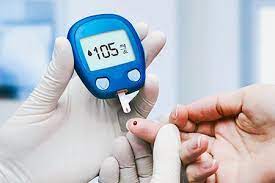Cases of gonorrhea and syphilis have seen an alarming rise across European Union/European Economic Association (EU/EEA) countries between 2022 and 2023, according to the latest Annual Epidemiological Reports from the European Centre for Disease Prevention and Control (ECDC). This surge raises pressing concerns about sexual health and the effectiveness of prevention measures.
A Dramatic Increase in STI Cases
Between 2014 and 2023, cases of gonorrhea skyrocketed by 321%, syphilis increased by 100%, and chlamydia saw a 13% rise. The ECDC reported that men who have sex with men (MSM) accounted for 58% and 72% of reported gonorrhea and syphilis cases, respectively, in 2023. MSM also made up 20% of reported chlamydia cases.
“MSM are overrepresented in all three bacterial STIs, with an upsurge in cases reported among MSM with negative HIV status—potentially HIV PrEP users who undergo more frequent testing, but also reflecting increased transmission,” stated Ottilia Mårdh, an ECDC scientific officer specializing in STIs.
She added that data on transgender people and migrant MSM remain limited, though early indicators suggest these populations may be at increased risk.
Rising Infections Among Heterosexual Men and Women
Heterosexual men and women have also experienced rising STI rates. Women aged 20-24 years exhibited particularly high rates of gonorrhea and chlamydia, while men aged 25-34 years recorded the highest rates of syphilis. Men were seven times more likely to be diagnosed with syphilis than women. However, the rate of syphilis among women saw a steeper increase of 20% between 2022 and 2023, compared to a 12% rise among men.
The ECDC also highlighted a concerning rise in congenital syphilis, with 78 confirmed cases in 2023, underscoring the potential impact of untreated infections during pregnancy.
Why Are STI Cases Increasing?
Mårdh pointed to several contributing factors behind the sharp increase in STIs, including higher rates of unprotected intercourse, increased use of dating apps, and shifts in “networks of intimacy.” Enhanced testing practices and improved case detection may also play a role, as well as the emergence of more transmissible and less symptomatic strains of gonorrhea.
Dr. Maria Wessman, head of bloodborne infections and STIs at Denmark’s Statens Serum Institute, suggested that diminished fear of HIV/AIDS could be another factor fueling the STI surge.
“Gonorrhea and syphilis were almost nonexistent in the late 1990s and early 2000s due to fear of HIV/AIDS. Since then, we have seen a steady increase in cases, most likely because people are no longer as afraid of HIV/AIDS and therefore take fewer protective measures,” she explained.
Risks to Women’s Health
The rising STI rates among young heterosexual individuals, especially women, have been particularly alarming. Wessman suggested that women are more likely than men to seek medical care and undergo testing, potentially explaining their higher reported rates of infection. Additionally, bacterial STIs may be more likely to persist in women due to biological factors.
The European Commission has warned that untreated gonorrhea and chlamydia infections in women can lead to severe complications such as pelvic inflammatory disease, ectopic pregnancy, chronic pelvic pain, and infertility. Syphilis, if left untreated, can result in adverse pregnancy outcomes, including miscarriage, fetal death, and birth abnormalities.
Strengthening STI Prevention Efforts
Mårdh emphasized the need for countries to develop national strategies for STI prevention based on high-quality epidemiological data. These strategies should target the primary drivers of transmission and focus on at-risk populations.
She recommended interventions such as sexual health education, condom promotion, stigma-free sexual health services, and easy access to STI testing and treatment.
“The fact that condoms are an effective way to protect against STIs is widely known but not widely practiced. By using innovative campaigns that address young people directly rather than patronizing them, it’s possible to reintroduce condoms as a protective choice,” Wessman suggested.
Mårdh also stressed the importance of ensuring that healthcare services are inclusive and free from stigma, offering comprehensive sexual health counseling, vaccinations, integrated testing, and access to necessary care services, such as HIV and hepatitis C treatment.
“Clinicians should follow evidence-based treatment guidelines, implement effective partner notification strategies, and ensure that patients return for test-of-cure for gonorrhea. Additionally, antibiotic susceptibility testing should be carried out,” she concluded.
Disclaimer
This article is based on the latest epidemiological data from the ECDC and expert opinions. Readers are encouraged to consult medical professionals for personalized advice and to stay informed about sexual health practices. Safe sex, regular testing, and early treatment remain critical in preventing and managing STIs.












